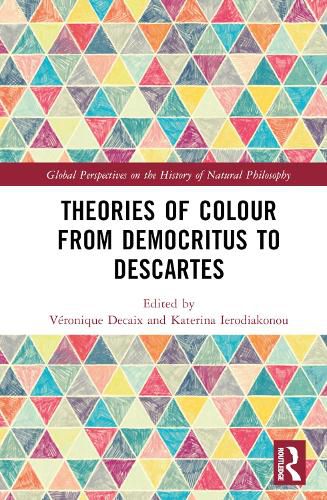Readings Newsletter
Become a Readings Member to make your shopping experience even easier.
Sign in or sign up for free!
You’re not far away from qualifying for FREE standard shipping within Australia
You’ve qualified for FREE standard shipping within Australia
The cart is loading…






Theories of Colour from Democritus to Descartes investigates issues of the ontological status and perception of colours, such as: What is the nature of colours? Do they exist independently of the subjects who perceive them? And if so, how are they generated and how do they differ from one another? These are some of the questions raised by philosophers, but what has been lacking is an account of the various theories about colours through different periods of the history of philosophy.
Exploring philosophical debates on the nature and perception of colours from a historical perspective, this book presents how different theories from Antiquity through the Middle Ages to the early modern era explain the nature of colours, their generation, and the way they are perceived. Twelve eminent historians of philosophy analyse the theories of colours prevailing at critical points in the history of Western philosophy, from its beginnings with Democritus to Descartes and the early modern period.
This book will appeal to students and scholars working on the history of philosophy (ancient, medieval, Arabic and Latin, and early modern) as well as those interested in contemporary philosophy: philosophy of the mind, philosophy of perception, phenomenology, metaphysics, and neurosciences. A broader audience may also include researchers in psychology, cultural history, and the history of art.
$9.00 standard shipping within Australia
FREE standard shipping within Australia for orders over $100.00
Express & International shipping calculated at checkout
Theories of Colour from Democritus to Descartes investigates issues of the ontological status and perception of colours, such as: What is the nature of colours? Do they exist independently of the subjects who perceive them? And if so, how are they generated and how do they differ from one another? These are some of the questions raised by philosophers, but what has been lacking is an account of the various theories about colours through different periods of the history of philosophy.
Exploring philosophical debates on the nature and perception of colours from a historical perspective, this book presents how different theories from Antiquity through the Middle Ages to the early modern era explain the nature of colours, their generation, and the way they are perceived. Twelve eminent historians of philosophy analyse the theories of colours prevailing at critical points in the history of Western philosophy, from its beginnings with Democritus to Descartes and the early modern period.
This book will appeal to students and scholars working on the history of philosophy (ancient, medieval, Arabic and Latin, and early modern) as well as those interested in contemporary philosophy: philosophy of the mind, philosophy of perception, phenomenology, metaphysics, and neurosciences. A broader audience may also include researchers in psychology, cultural history, and the history of art.